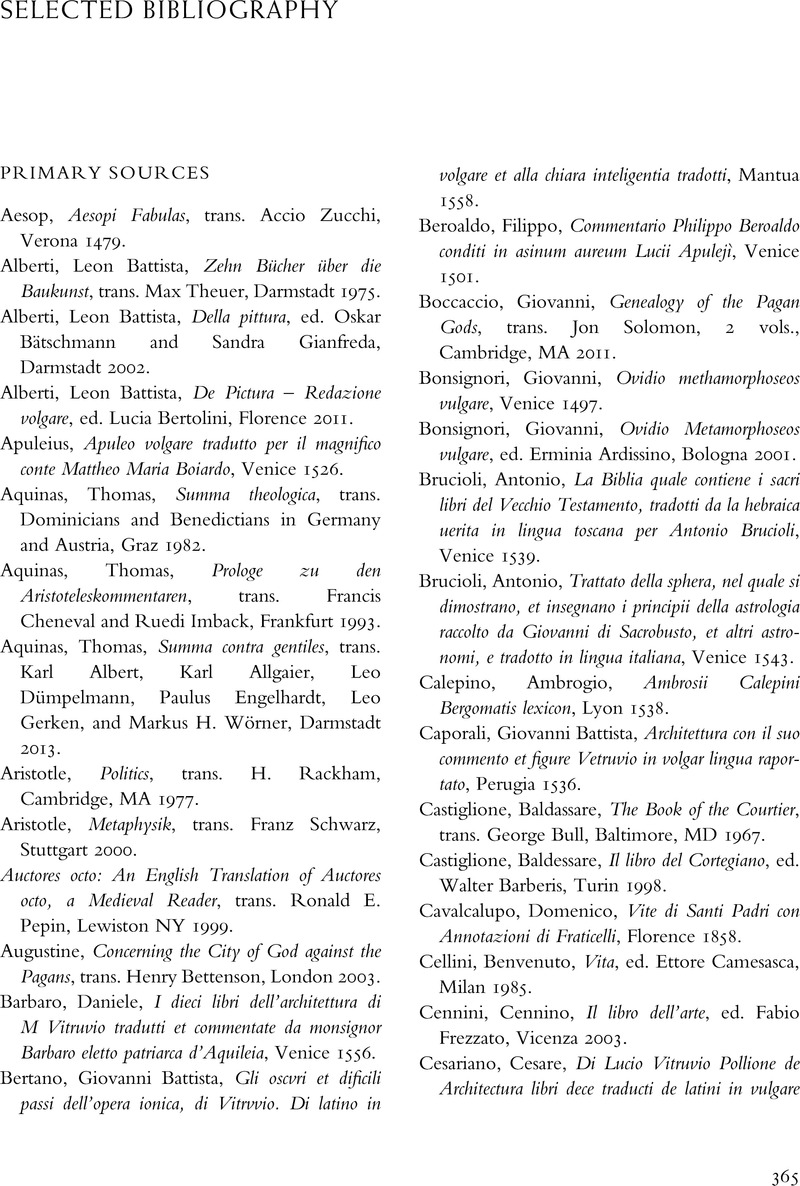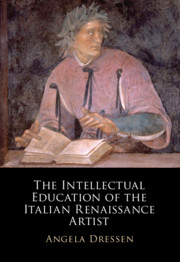Book contents
- The Intellectual Education of the Italian Renaissance Artist
- The Intellectual Education of the Italian Renaissance Artist
- Copyright page
- Contents
- Illustrations
- Preface
- Introduction
- One Mechanical Arts versus Liberal Arts and Recommendations for the Artist’s Education
- Two Educational Places and Opportunities
- Three The Mediating Texts
- Four Vitruvius and Pliny as Sourcebooks, Educational Landmarks, and Intellectual Challenge
- Conclusion
- Book part
- Selected Bibliography
- Index
- References
Selected Bibliography
Published online by Cambridge University Press: 28 August 2021
- The Intellectual Education of the Italian Renaissance Artist
- The Intellectual Education of the Italian Renaissance Artist
- Copyright page
- Contents
- Illustrations
- Preface
- Introduction
- One Mechanical Arts versus Liberal Arts and Recommendations for the Artist’s Education
- Two Educational Places and Opportunities
- Three The Mediating Texts
- Four Vitruvius and Pliny as Sourcebooks, Educational Landmarks, and Intellectual Challenge
- Conclusion
- Book part
- Selected Bibliography
- Index
- References
Summary

- Type
- Chapter
- Information
- The Intellectual Education of the Italian Renaissance Artist , pp. 365 - 378Publisher: Cambridge University PressPrint publication year: 2021



